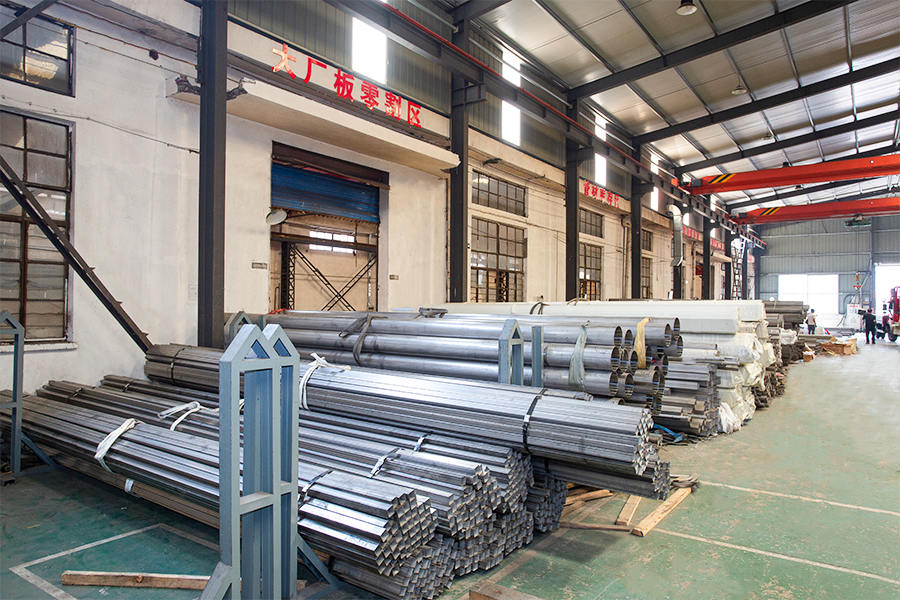Stainless steel welded pipes are widely used in industries ranging from construction and automotive to oil, gas, and food processing. Known for their corrosion resistance, durability, and adaptability, these pipes have become a preferred choice for transporting liquids, gases, and structural applications. But what makes them so essential? How are they produced, and where are they most effective? This article will explore their definition, manufacturing process, types, properties, applications, and advantages in detail.
1. What Is a Stainless Steel Welded Pipe?
A stainless steel welded pipe is a cylindrical tube made from stainless steel plates or strips that are formed and welded along their length. Unlike seamless pipes, which are made by extrusion without welding, welded pipes are produced by rolling flat steel into a cylindrical shape and welding the seam.
Stainless steel, containing at least 10.5% chromium, forms a passive oxide layer that protects the surface from rust and corrosion. When combined with welding technology, it creates a pipe that is cost-effective, versatile, and strong.
2. How Are Stainless Steel Welded Pipes Made?
The manufacturing process generally involves the following steps:
- Material Preparation – Stainless steel coils or plates are selected based on the required grade (e.g., 304, 316, 321).
- Forming – The steel is cold-rolled or hot-rolled into a cylindrical shape.
- Welding – The edges are joined using techniques like Electric Resistance Welding (ERW), Tungsten Inert Gas (TIG) welding, or Laser Welding.
- Bead Removal – The internal and external weld beads may be removed for a smooth finish.
- Heat Treatment – Annealing relieves stress and restores corrosion resistance in the weld area.
- Surface Finishing – Pickling, polishing, or passivation improves surface appearance and resistance to oxidation.
- Testing – Pipes undergo pressure testing, X-ray inspection, and dimensional checks.
- Cutting and Packaging – Final products are cut to specified lengths and packaged for shipment.
3. Types of Stainless Steel Welded Pipes
| Type | Welding Method | Features | Typical Applications |
|---|---|---|---|
| ERW (Electric Resistance Welded) | High-frequency electrical current fuses edges together | High production speed, cost-effective | Structural tubing, water pipes |
| TIG Welded | Tungsten Inert Gas arc creates precise welds | Smooth finish, high corrosion resistance | Food processing, chemical piping |
| Laser Welded | High-energy laser beam melts and joins edges | Narrow welds, minimal distortion | Medical devices, precision tubing |
| Spiral Welded | Helical seam from rolled steel strip | Large diameters possible | Oil & gas transmission, water supply |
| UOE Welded | Plate formed into U, O shapes and expanded | High-strength, large-diameter pipes | Offshore pipelines, structural supports |
4. Key Properties and Advantages
- Corrosion Resistance – Ideal for harsh environments including marine, chemical, and outdoor applications.
- Durability – High strength-to-weight ratio ensures long service life.
- Hygienic – Non-porous surface resists bacterial growth, suitable for food and pharmaceutical use.
- Aesthetic Appeal – Smooth, shiny finish suits architectural and decorative purposes.
- Cost Efficiency – More economical than seamless pipes for many applications.
- Versatility – Available in various diameters, thicknesses, and grades for different needs.
5. Applications of Stainless Steel Welded Pipes
- Construction and Architecture – Handrails, columns, and structural supports.
- Oil and Gas – Transport of crude oil, natural gas, and petrochemicals.
- Water Treatment – Pipes for desalination plants, potable water, and wastewater systems.
- Food and Beverage – Sanitary piping for dairy, brewing, and bottling plants.
- Chemical Industry – Corrosion-resistant pipelines for acids, solvents, and industrial chemicals.
- Automotive and Transportation – Exhaust systems, chassis components, and hydraulic lines.
- Marine Applications – Shipbuilding, offshore platforms, and underwater pipelines.
6. Choosing the Right Stainless Steel Welded Pipe
-
Grade Selection –
- 304 – General-purpose, good corrosion resistance.
- 316 – Superior resistance to chlorides, ideal for marine use.
- 321 – Stabilized with titanium for high-temperature service.
-
Diameter and Wall Thickness – Based on pressure, flow rate, and structural load.
-
Welding Method – TIG for hygienic applications, ERW for structural, Laser for precision.
-
Surface Finish –
- 2B – Smooth, matte finish for industrial use.
- Polished – Decorative or hygienic purposes.
-
Standards Compliance – Ensure compliance with ASTM, ISO, or EN standards.
7. Maintenance and Care
- Regular Cleaning – Remove dirt, chemicals, and salt deposits to prevent localized corrosion.
- Inspection of Welds – Look for cracks or pitting around seams.
- Avoid Harsh Abrasives – Use mild detergents and soft brushes.
- Protective Coatings – In extreme environments, consider additional coatings or wraps.
- Prompt Repairs – Address any damage quickly to prevent structural failure.
8. Benefits Over Other Pipe Types
- Compared to Carbon Steel Pipes – Better corrosion resistance, lower maintenance, longer service life.
- Compared to Plastic Pipes – Higher temperature resistance, greater strength, better mechanical durability.
- Compared to Seamless Pipes – Lower production cost, more size flexibility, faster manufacturing.

9. Environmental Considerations
Stainless steel welded pipes are 100% recyclable, and their long service life reduces replacement frequency, minimizing environmental impact. Modern production techniques aim to reduce energy use, welding emissions, and waste generation.
10. Conclusion
Stainless steel welded pipes are indispensable in industries where strength, corrosion resistance, hygiene, and cost-effectiveness are key. Their wide range of grades, finishes, and sizes make them adaptable to applications from offshore pipelines to elegant architectural designs.
By understanding their manufacturing process, types, and proper selection criteria, engineers and procurement teams can ensure they choose the most efficient, durable, and sustainable piping solution for their projects.


 English
English русский
русский عربى
عربى 中文简体
中文简体
